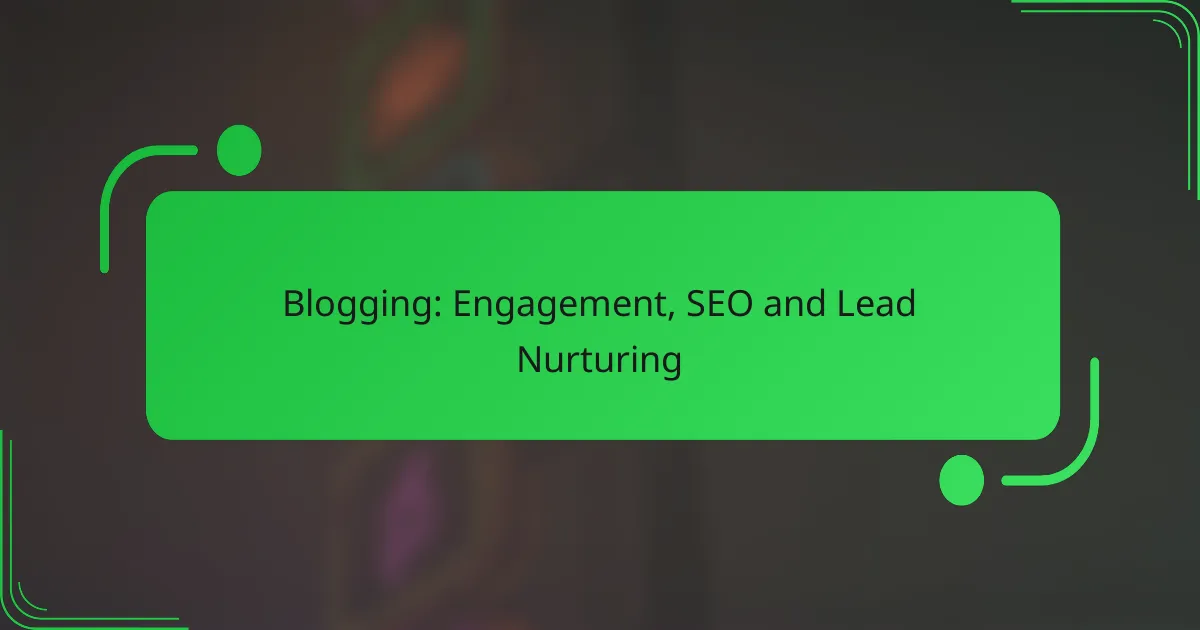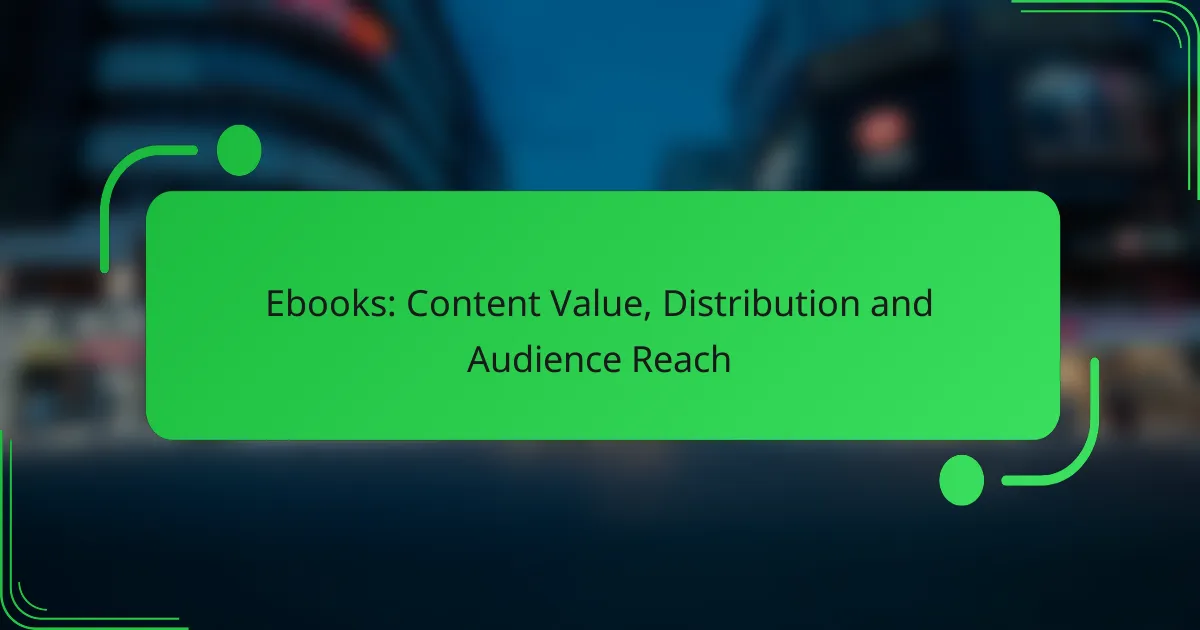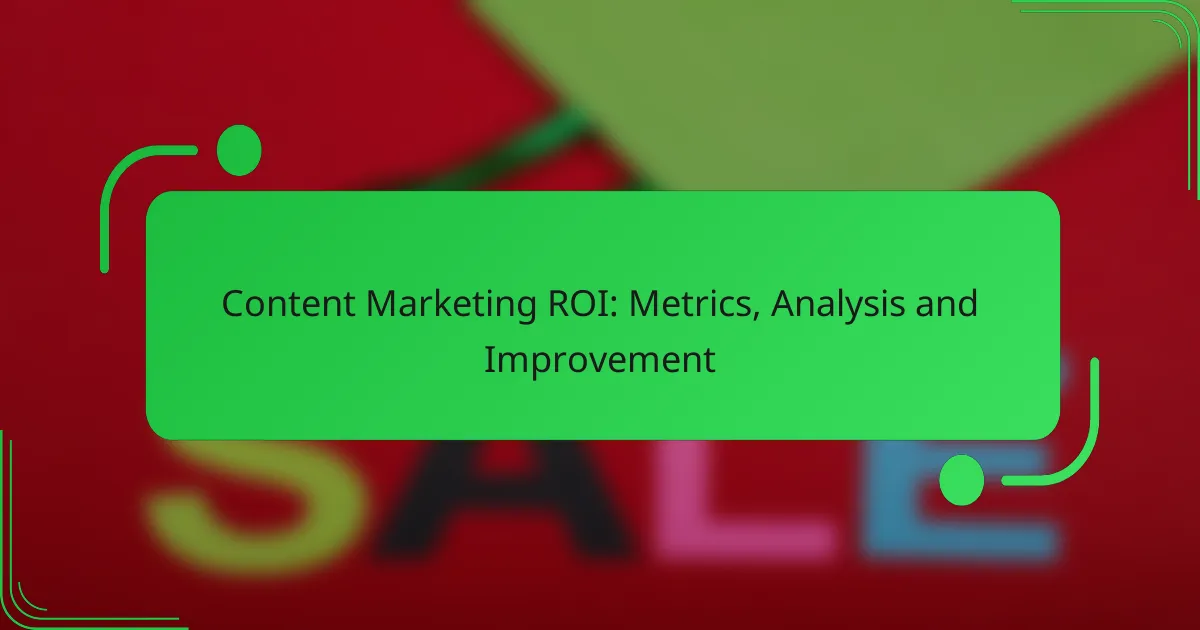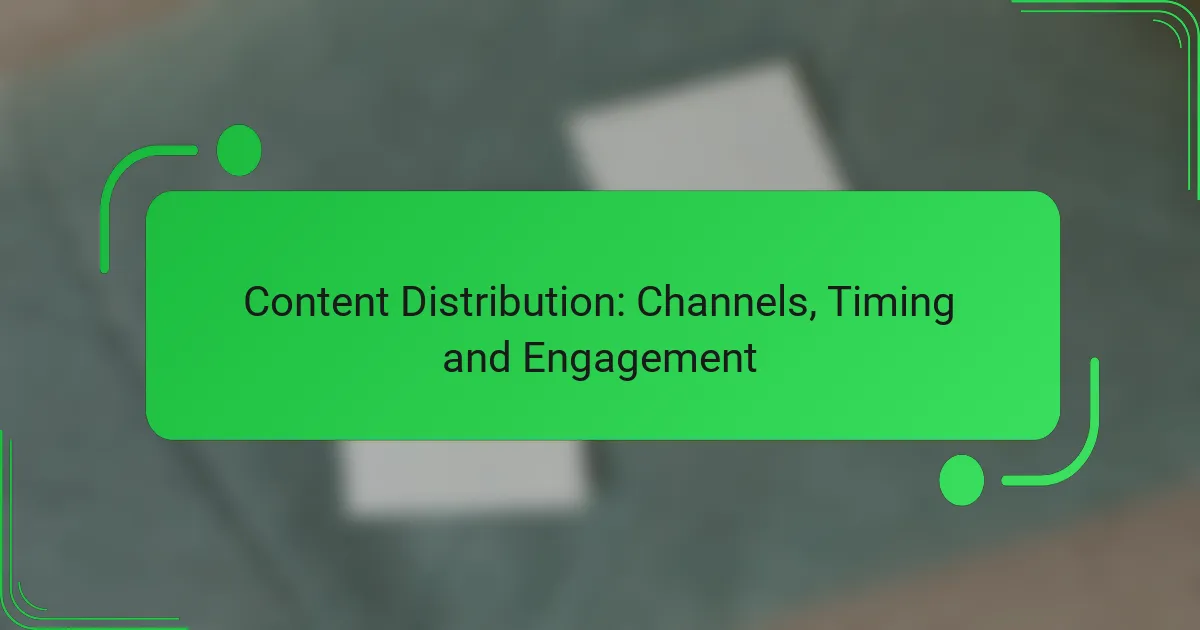Blogging serves as a powerful tool for lead generation by attracting potential customers with valuable content that builds trust and drives conversions. By implementing effective SEO strategies, businesses can enhance their visibility in search engines, increasing organic traffic and user engagement. Engaging content not only keeps readers on the page longer but also encourages sharing and repeat visits, ultimately boosting overall blog performance.
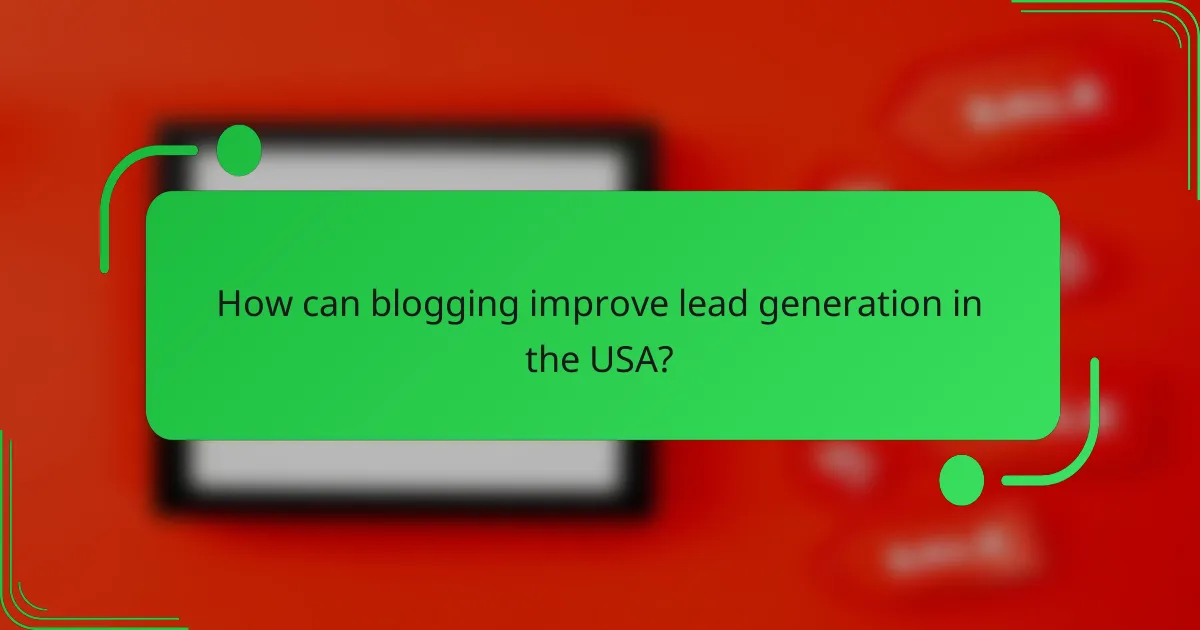
How can blogging improve lead generation in the USA?
Blogging can significantly enhance lead generation in the USA by attracting potential customers through valuable content. By providing informative and engaging articles, businesses can capture interest, build trust, and ultimately convert readers into leads.
Increased website traffic
Regularly updated blogs can drive substantial traffic to your website. Search engines favor fresh content, which means that well-optimized blog posts can rank higher in search results, leading to increased visibility.
To maximize traffic, focus on relevant keywords and topics that resonate with your target audience. Aim for a consistent posting schedule, ideally once a week or bi-weekly, to keep your site active and engaging.
Enhanced brand visibility
Blogging enhances brand visibility by establishing your business as an authority in your industry. When you share insights, tips, and expert knowledge, you position your brand as a go-to resource for information.
Utilize social media platforms to share your blog posts and engage with your audience. This not only broadens your reach but also encourages shares and discussions, further amplifying your brand’s presence.
Targeted audience engagement
Effective blogging allows you to engage directly with your target audience. By addressing their pain points and interests, you can create content that resonates and encourages interaction.
Incorporate calls-to-action (CTAs) within your posts to guide readers toward the next steps, whether it’s subscribing to a newsletter, downloading a resource, or contacting your sales team. Tailoring your content to specific audience segments can lead to higher conversion rates.
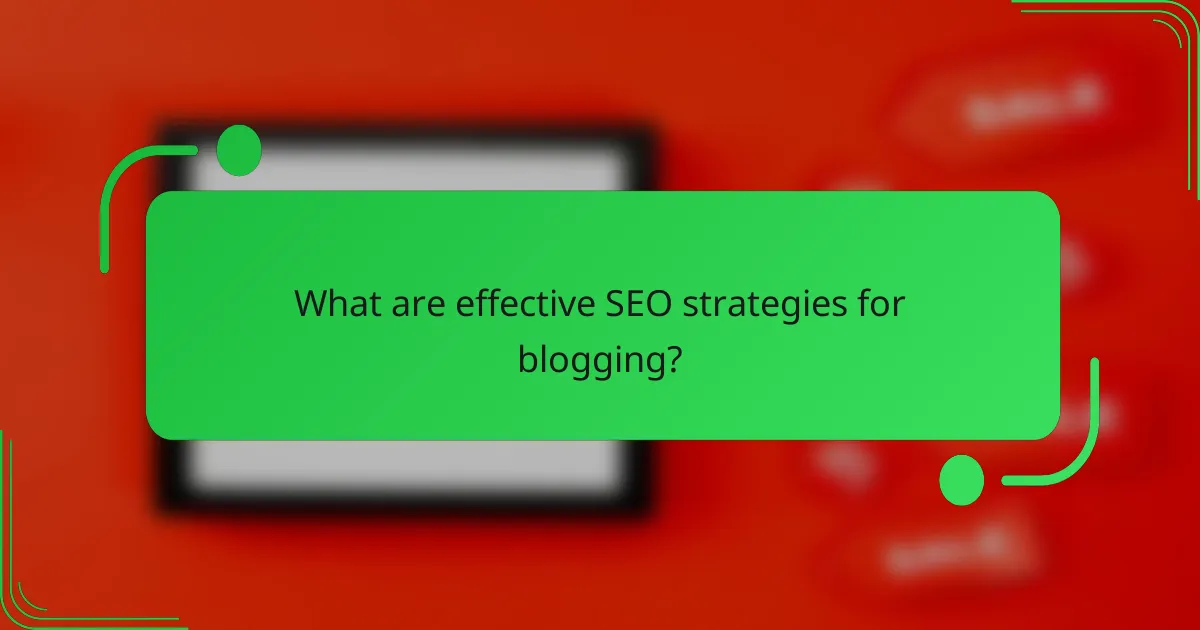
What are effective SEO strategies for blogging?
Effective SEO strategies for blogging focus on enhancing visibility in search engines, driving organic traffic, and improving user engagement. Key strategies include keyword optimization, quality content creation, and backlink building.
Keyword optimization
Keyword optimization involves researching and selecting relevant keywords that your target audience is searching for. Use tools like Google Keyword Planner or SEMrush to identify high-volume keywords that align with your blog’s theme.
Incorporate these keywords naturally into your blog titles, headings, and throughout the content. Aim for a keyword density of around 1-2% to avoid keyword stuffing, which can negatively impact your SEO ranking.
Quality content creation
Creating quality content is essential for engaging readers and improving SEO. Focus on producing informative, well-researched articles that provide value to your audience. Aim for a word count of at least 1,000 words to cover topics comprehensively.
Use clear headings, bullet points, and images to enhance readability. Regularly update your content to keep it relevant and accurate, which can help maintain or improve your search engine rankings.
Backlink building
Backlink building is the process of acquiring links from other websites to your blog. These links act as endorsements, signaling to search engines that your content is credible and valuable. Aim to get backlinks from reputable sites within your niche.
Strategies for building backlinks include guest blogging, creating shareable infographics, and engaging with industry influencers. Avoid low-quality or spammy links, as they can harm your SEO efforts and credibility.
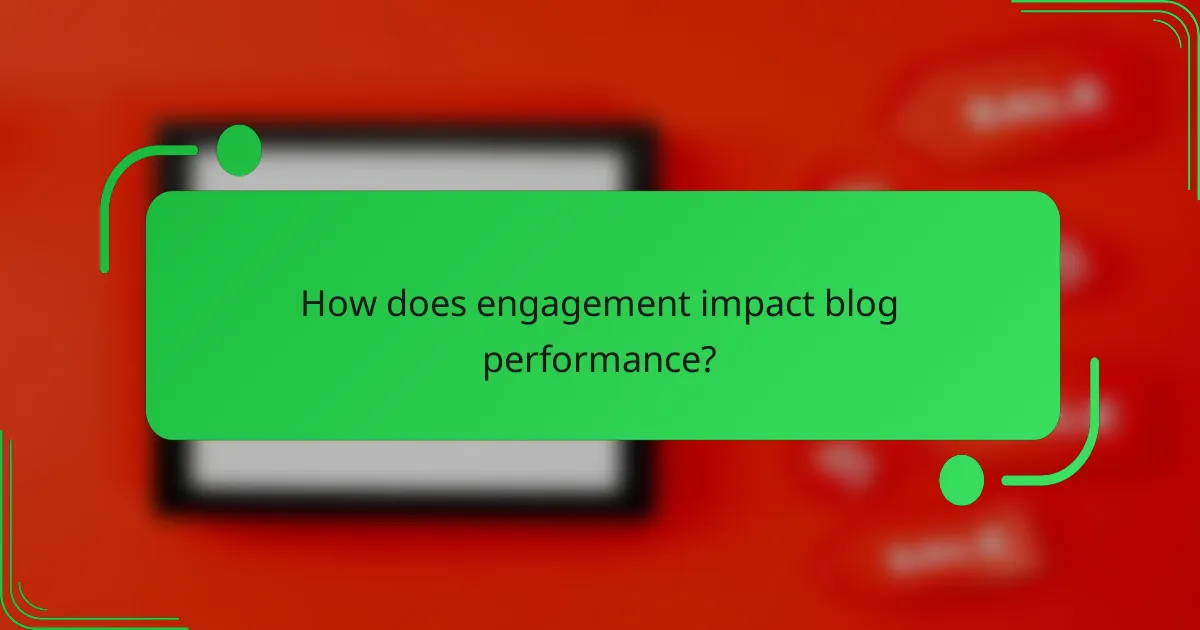
How does engagement impact blog performance?
Engagement significantly influences blog performance by enhancing user interaction and satisfaction, which can lead to better search engine rankings and increased conversions. When readers are engaged, they are more likely to stay on the page longer, share content, and return for future visits.
Higher conversion rates
Engaged readers are more likely to convert into leads or customers. When your blog content resonates with the audience, it encourages them to take action, such as signing up for newsletters or making purchases. A well-placed call-to-action (CTA) within engaging content can boost conversion rates by a considerable margin, often reaching low double-digit percentages.
To maximize conversions, ensure your CTAs are clear and relevant to the content. For example, if a blog post discusses a specific product, include a direct link to purchase that product. Avoid cluttering your posts with too many CTAs, as this can overwhelm readers and reduce the effectiveness of each one.
Improved reader retention
High engagement levels lead to improved reader retention, meaning visitors are more likely to return to your blog. Engaging content keeps readers interested and encourages them to explore more articles, which can create a loyal audience base. Techniques such as storytelling, interactive elements, and multimedia can enhance engagement.
To foster retention, consider implementing a consistent posting schedule and creating a series of related posts that encourage readers to come back for more. Additionally, use analytics to identify which topics resonate most with your audience and tailor future content accordingly.

What tools can enhance blogging effectiveness?
Several tools can significantly improve blogging effectiveness by optimizing engagement, enhancing SEO, and nurturing leads. Utilizing the right combination of analytics, SEO plugins, and marketing platforms can streamline your blogging efforts and drive better results.
Google Analytics
Google Analytics is a powerful tool that tracks and reports website traffic, providing insights into user behavior. By analyzing metrics such as page views, bounce rates, and session duration, bloggers can understand which content resonates with their audience and adjust their strategies accordingly.
To maximize its effectiveness, set up goals and conversion tracking to measure specific actions, such as newsletter sign-ups or product purchases. Regularly review your analytics data to identify trends and optimize your content for better engagement.
Yoast SEO
Yoast SEO is a popular WordPress plugin that helps bloggers optimize their content for search engines. It provides real-time feedback on keyword usage, readability, and meta descriptions, ensuring your posts are both user-friendly and search engine-friendly.
When using Yoast, focus on the green lights for SEO and readability scores, but remember that quality content should always come first. Regularly update your SEO settings as search engine algorithms change to maintain visibility in search results.
HubSpot
HubSpot is an all-in-one marketing platform that offers tools for blogging, email marketing, and lead nurturing. Its blogging tool allows for easy content creation and optimization, while its CRM helps track and manage leads effectively.
Utilize HubSpot’s analytics to assess the performance of your blog posts and tailor your content strategy based on audience engagement. Take advantage of its automation features to nurture leads through targeted email campaigns, improving conversion rates over time.
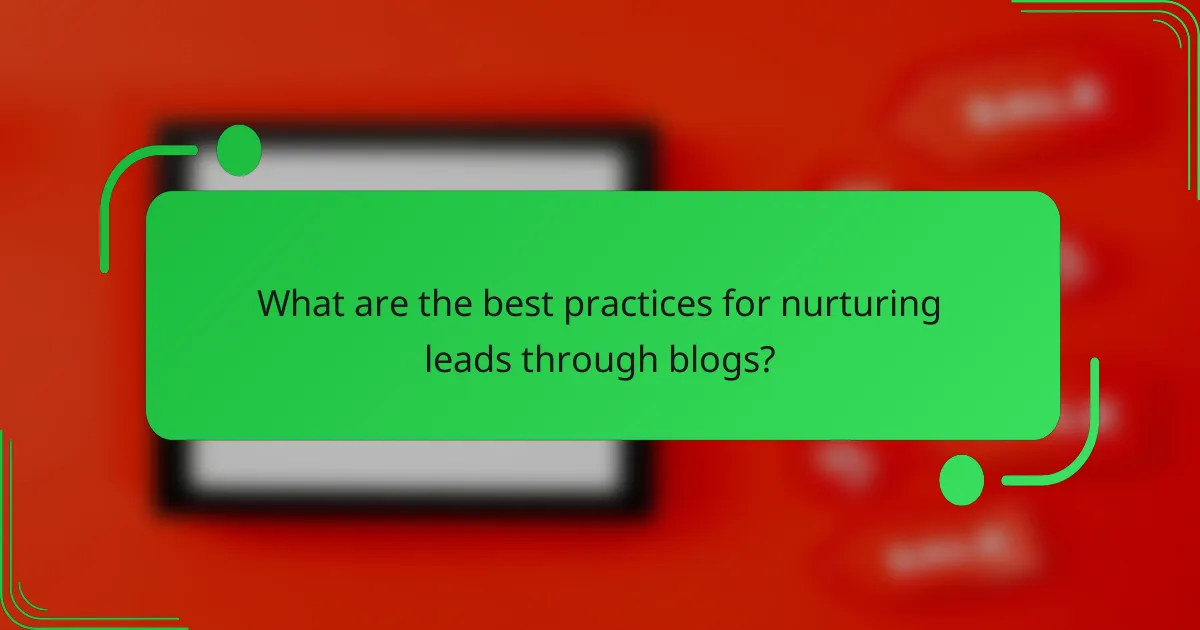
What are the best practices for nurturing leads through blogs?
Nurturing leads through blogs involves creating engaging content that guides potential customers through their decision-making process. Key practices include strategically placing calls-to-action and prompting email subscriptions to build a relationship with your audience.
Call-to-action placement
Effective call-to-action (CTA) placement is crucial for converting readers into leads. Position CTAs at the end of blog posts, within the content, or as pop-ups to capture attention at key moments. Ensure that the CTA is clear, compelling, and relevant to the content to encourage clicks.
Consider using contrasting colors and concise language to make CTAs stand out. For example, a blog about digital marketing strategies could include a CTA like “Download our free guide to mastering SEO” at the end, enticing readers to take the next step.
Email subscription prompts
Email subscription prompts are essential for building a list of interested leads. Place subscription forms prominently on your blog, ideally in the sidebar, at the end of posts, or as a timed pop-up. Offer incentives such as exclusive content or discounts to encourage sign-ups.
Keep the subscription process simple by asking for minimal information, such as just an email address. A well-placed prompt, like “Join our newsletter for the latest insights and tips,” can significantly increase your subscriber base and enhance lead nurturing efforts.
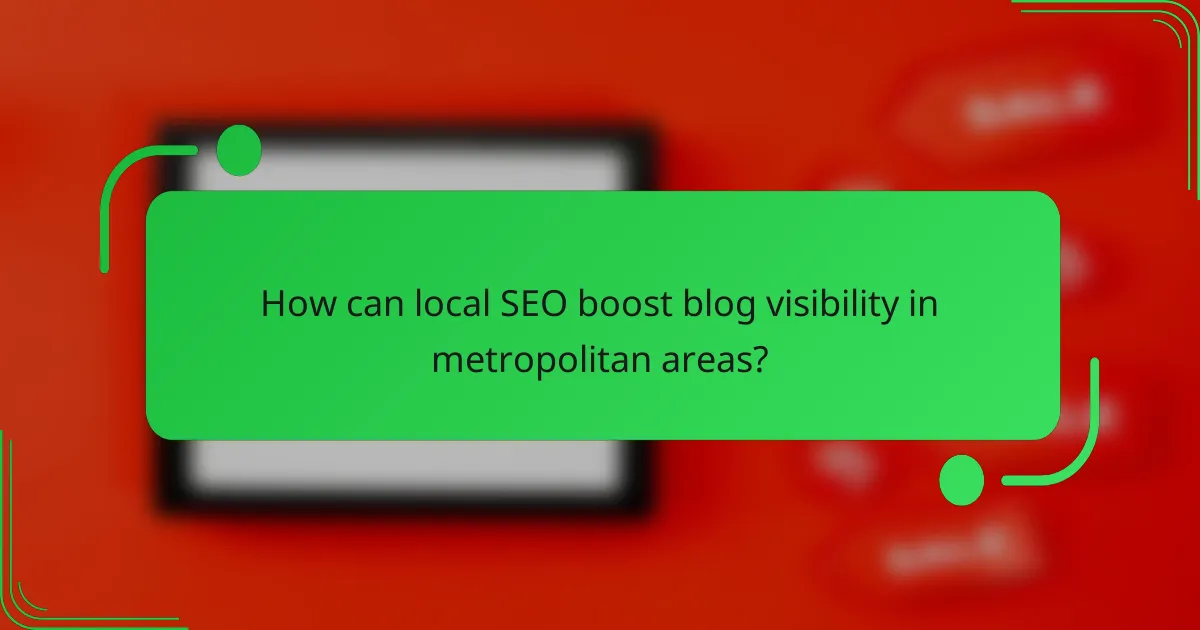
How can local SEO boost blog visibility in metropolitan areas?
Local SEO can significantly enhance blog visibility in metropolitan areas by optimizing content for location-specific searches. This approach helps attract a targeted audience looking for relevant information or services within their vicinity.
Geo-targeted keywords
Geo-targeted keywords are essential for local SEO as they connect your blog content with specific geographic locations. Incorporating terms that include city names, neighborhoods, or regional slang can help your blog rank higher in local search results.
For example, instead of using a general term like “best coffee,” consider phrases like “best coffee in downtown Seattle” or “top cafes in Brooklyn.” This specificity not only improves search visibility but also attracts readers who are more likely to engage with your content.
To effectively use geo-targeted keywords, conduct keyword research using tools like Google Keyword Planner or SEMrush. Focus on long-tail keywords that reflect local intent, and ensure they are naturally integrated into your blog titles, headings, and body text for optimal impact.
